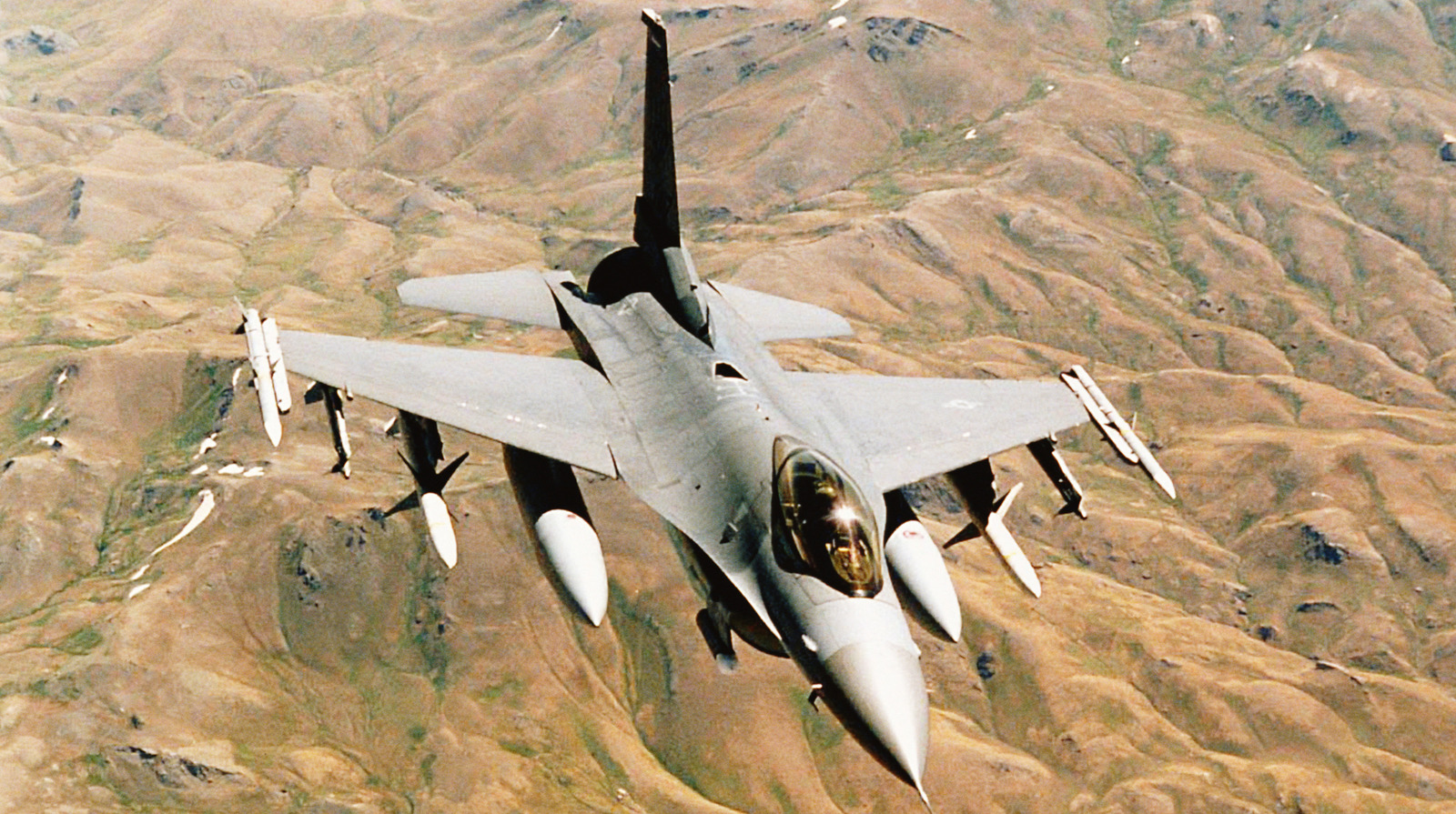
The F-16 Fighting Falcon has been flying for the United States and allied countries since it was first introduced in 1978, and it’s still being produced to this day. That’s a long life for a complex aircraft, but thanks to upgrades and variants, the jet is capable of standing up against other fourth-generation and even some fifth-generation fighters. In fact, it’s so capable it’s become a serious issue for Russia in its war with Ukraine, as the U.S. and other NATO allies have sent F-16s to the war-ravaged European nation.
Since its introduction, the F-16 has been manufactured extensively, with more than 4,600 produced as of June 2018. Production picked up the following year, so more have rolled off assembly lines located in Greenville, South Carolina. Initially, the F-16 was produced out of Lockheed Martin’s Fort Worth, Texas plant, but moved production to make room for F-35 manufacturing in 2017.
F-16s are still very much in use today despite being overshadowed by fifth-generation aircraft like the F-35. They’re an important factor in the United States’ offensive and defensive capabilities, and a big part of the defense spending economy. Each aircraft costs tens of millions to produce, and a single flight hour costs tens of thousands of dollars in maintenance, though the costs are only one factor in the F-16’s long and impressive history.
Where is the F-16 built now?
The F-16 Fighting Falcon entered development towards the tail end of the Vietnam War, designed with the lessons learned from that conflict in mind. The program continued through the early 1970s, resulting in various concept designs before a final plan was ultimately chosen. General Dynamics’ YF-16 began flight testing in 1973, and the aircraft was selected in 1975. Production soon ramped up at the Fort Worth plant until the F-35 bumped it to South Carolina.
General Dynamics was the initial defense contractor responsible for the design and production of the F-16, which quickly proved itself a strong and capable fighter. While the F-16’s primary production occurred in Texas for years, the jet’s plans were also licensed to allies all over the world. Turkish Aerospace Industries produced its own F-16s in Ankara, Turkey. Similarly, Korean Aerospace Industries produced a line of F-16s inside Korea. Belgium, Denmark, Norway, the Netherlands, and India all did the same, too. The F-16 is flown by several U.S. allies, but only a handful produce their own and instead have to procure them from the States.
In the early 1990s, General Dynamics sold its aircraft production business to the Lockheed Corporation, which ultimately became Lockheed Martin after the company merged with Martin Marietta a couple of years later. Ever since, Lockheed Martin has been the primary producer of F-16s in the world. After moving production to its plant in Greenville, Lockheed restarted production with Block 70 and will produce at least 128 F-16s by the end of the 2020s.










